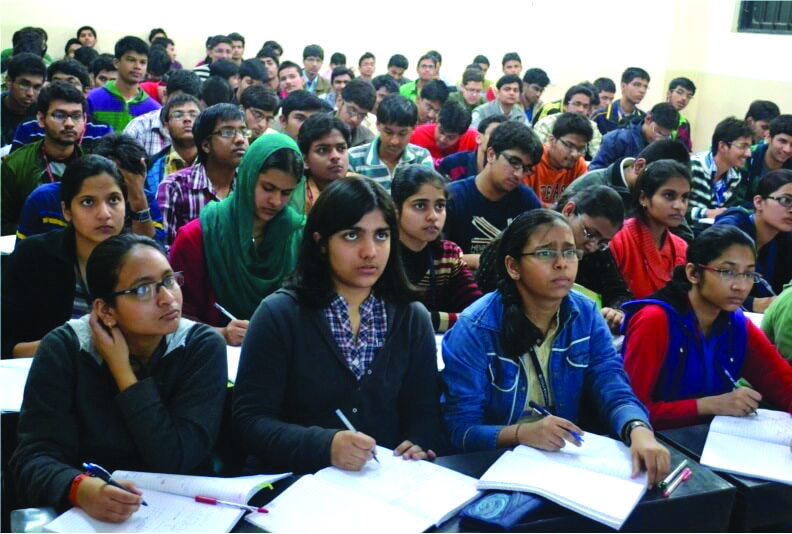Reshma Ravishanker (Bengaluru)

Against the backdrop of rising student suicides being reported from Kota, Rajasthan — the tests prep capital of India where 26 secondary students committed suicide last year, the highest ever annually — the Union ministry of education has been under pressure to rein in the unchecked growth of the Rs.58,000 crore coaching classes industry. On January 19, the ministry announced a new set of guidelines for the country’s estimated 31,000 coaching centres/private tutorials which prepare secondary/higher secondary students for competitive tests such as IIT-JEE, NEET, CUET, among other undergrad entry exams.
The guidelines, which direct the country’s 29 state governments to re-register coaching centres, prohibit the latter from enrolling children under 16 years of age; allow only individuals with graduation and above qualifications to be hired as faculty; restrict classes to not more than five hours per day and mandate all tutorial centres to upload websites furnishing details about tutors, courses, curriculum and fees. They also bar coaching centres from publishing “misleading” advertising claims about student success — “coaching institutes cannot publish or cause to be published or take part in the publication of any misleading advertisement relating to any claim, directly or indirectly, of quality of coaching or the facilities offered therein or the result procured by such coaching centre or the student who attended such class”.
More importantly, citing “tough competition and academic pressure on students”, the guidelines direct coaching centres to prioritise the mental well-being of their students. “They should establish a mechanism for immediate intervention to provide targeted and sustained assistance to students in distress and stressful situations. The competent authority may take steps to ensure that a counselling system is developed by the coaching centre and is easily available for the students and parents.” Other guidelines relate to fire safety, infrastructure requirements, and greater transparency in fees structures/refunds. Penalty for violations of the guidelines range from a monetary fine (Rs.25,000-1 lakh) to revocation of registration of errant coaching centres.
However it’s pertinent to note that the Centre’s guidelines are applicable only to coaching centres with an enrolment of 50 students and above. The guidelines define a coaching centre as “a place providing coaching for any study programme or competitive examinations or academic support to more than 50 students at school, college, and university level, but does not include counselling, sports, dance, theatre and other creative activities”.
A prime factor driving the growth of the test prep industry and student stress/student epidemic, is intense competition to secure admission into the limited seats available in the country’s too-few high-quality colleges and universities such as the IITs, medical institutions, and top-ranked undergrad colleges. For instance, the country’s 23 IITs admit a mere 17,385 students — 1.6 percent of the 1.1 million who write the IIT-JEE exam. Ditto the country’s 695 medical colleges admit only 1.06 lakh of the 1.14 million school-leavers who write the NEET exam annually. This demand-supply gap supplemented with the persistent failure of government to upgrade the country’s 45,000 undergrad colleges is pushing a rising number of students to enroll in coaching institutes where rigorous study time-tables drive some to suicide.
Commenting on the newly issued guidelines in the Times of India (January 27), Prof. V. Ramgopal Rao, former director of IIT-Delhi and group vice chancellor of BITS-Pilani, wrote that “to truly tackle the problems associated with coaching institutes and reduce anxiety among students, the country needs to adopt a comprehensive approach that goes beyond mere symptom treatment”. He recommends several initiatives — improving the supply-demand-ratio by increasing the number of seats in premier institutes, developing effective online learning programmes, increased investment in teacher training, making competitive exam processes more transparent and launching public awareness campaigns to educate students and parents on the diversity of career pathways available.
Prof. A.S. Seetharamu, a Bengaluru-based educationist and former professor of education, Institute of Social & Economic Change, blames over-the-top affirmative action. “The government’s reservation policy (for scheduled castes, tribes and OBCs) has reduced the number of general merit seats available in professional colleges. This has intensified competition with students relying on coaching centres to get them admission. We need to increase student capacity in our premier institutions as well as invest in upgrading second and third-tier universities and colleges. Moreover, we need to upgrade secondary school curriculums and standardise them across all state and central boards. This will ensure a level playing field for all students writing competitive exams.”
At bottom, all these recommendations to reduce students’ stress and cut the Rs.58,000 crore test prep/coaching industry to size require greater budgetary allocation for human resource development aka education.
For several decades, education expenditure (Centre plus states) has been mired in the 3-4 percent of GDP bog cf. 7-10 percent expended by developed OECD countries and the global average of 5 percent. With the Centre running a 6.5 percent fiscal deficit and most states following suit and unwilling to slash middle class subsidies and runaway establishment expenditure and monetise public sector assets to release resources for education, initiatives such as proscribing coaching schools are little more than a slap on the wrist and likely to drive the test prep industry underground.





















